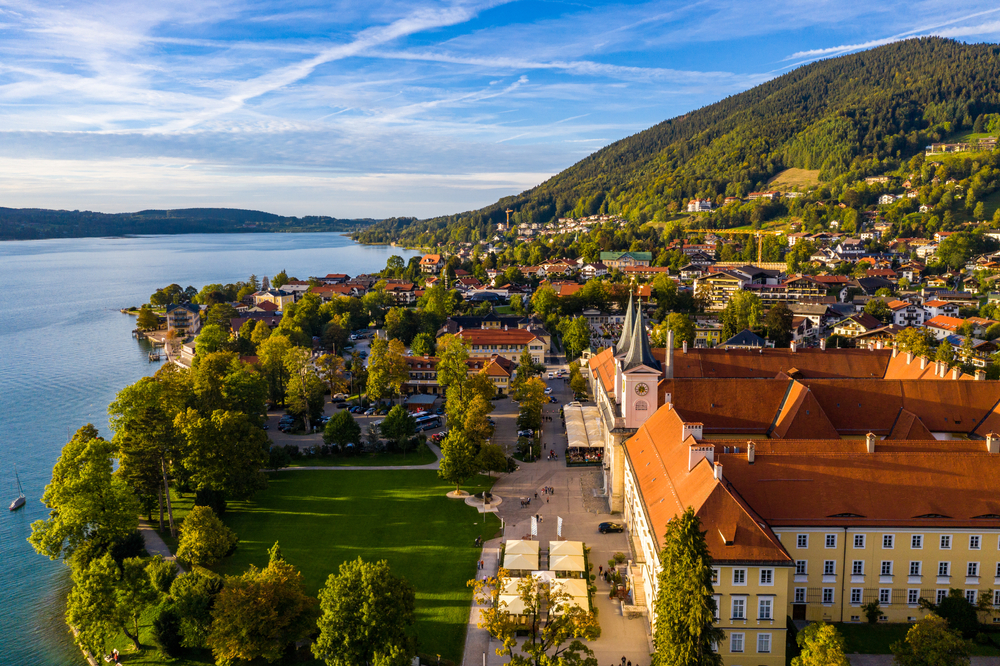With an area of 70,500 square kilometers, Bavaria is the largest state in Germany. All over the world, it is famous for its Oktoberfest, which has been held since 1810. And the highest mountain in Germany, the 2962-metre-high Zugspitze, is also located in Bavaria.
Customs and traditions still play a very decisive role here. These are lived out above all in the shooting, boys, hunting and maypole clubs, which can be found in almost every town.
Today’s traditional costume is considered by many to be “typically Bavarian”, but it is usually only taken out on special occasions. The situation is different with the traditional traditional costume associations, whose members want to express their attachment to their homeland by wearing dirndls and lederhosen.
Bavaria offers all its visitors a variety of leisure activities. Nature and culture, but also sport, are important components of this region. After all, with about 200 courses, there is also the highest density of golf courses in Germany. Below you will find the most beautiful sights in Bavaria…
1. Bavaria’s cities
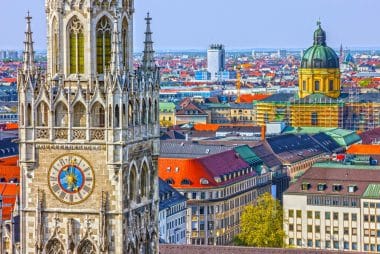
Many Bavarian cities are worth a trip in themselves. The state capital of Munich offers interesting architecture with its neo-Gothic town hall and a park larger than Central Park in New York with the English Garden.
In Regensburg, the Stone Bridge from the 12th century, the Walhalla Memorial and the Regensburg Cathedral bear witness to the magnificent past of the state.
Historic castles can be visited in Nuremberg with the Imperial Castle and in Würzburg with the Marienberg Fortress there.
2. Zugspitze
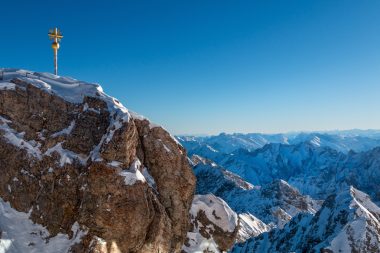
The cable car or cogwheel railway from Garmisch-Partenkirchen takes you high up to the largest mountain in Bavaria (and the Federal Republic). From here, a magnificent panoramic view opens up over the surrounding mountain peaks of Germany, Austria, Italy and Switzerland. The great view can also be enjoyed in the associated summit restaurant – together with a few Bavarian delicacies.
3. Chiemsee
The “Bavarian Sea” not only attracts its visitors with its breathtaking alpine scenery – the two islands Herrenchiemsee and Frauenchiemsee are also worth a visit. There you can visit both the Frauenchiemsee Monastery and Herrenchiemsee Castle. King Ludwig II had the latter built as an image of the Palace of Versailles in Paris . Its Hall of Mirrors stretches over 75 meters, making it larger than the original.
4. Neuschwanstein Castle
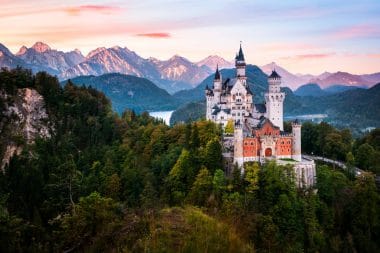
Probably one of the most famous sights in Bavaria is Neuschwanstein Castle near Hohenschwangau. While it once served as a retreat for the Bavarian King Ludwig II, it now enchants tourists from all over the world with its beauty.
5. Bavarian Forest with Treetop Walk
You can enjoy a lot of nature in the Bavarian Forest Nature Park in the east of the state on the border with the Czech Republic. Surrounded by crystal-clear lakes and unique mountain landscapes, many leisure activities await the whole family. Particularly noteworthy is the treetop walk there. From its 44-metre-high tree tower, you can even see the Alps in clear air. Our special tip: The mountain bike round trip Trans Bayerwald.
6. Kampenwand
For all hiking enthusiasts, the ascent to the 1169-metre-high Kampenwand in the Chiemgau Alps is worthwhile. There you can marvel at the largest summit cross in the Bavarian Alps and a unique view as far as the Hohe Tauern in Austria . If you are not good on foot, you also have the option of taking the mountain railway to the top.
7. Stalactite Cave Devil’s Cave
A visit to one of the largest rock grottos in Germany is a must on a holiday in Bavaria. On a guided tour, you can admire the 3000-metre-long Devil’s Cave in Upper Franconia with its large halls and countless stalactites. Especially on hot summer days, the cave offers a successful change with its approximately 10 degrees Celsius.
8. Partnach Gorge
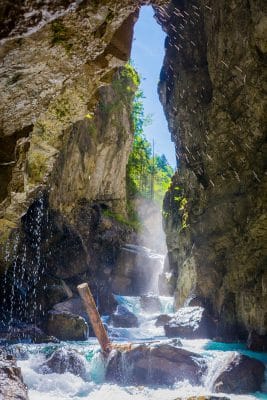
Tourists have been drawn to the Partnach Gorge in Garmisch-Patenkirchen since 1912. The 700-metre-long gorge can be hiked all year round. In summer, the fresh air provides cooling – in winter, the huge icicles hanging from the steep rock faces are particularly impressive.
9. Castle in Burghausen
Burghausen in Upper Bavaria is home to the longest castle complex in the world. At 1051 meters, museums and exhibitions can be visited and guided tours can be taken. In addition to all the towers and battlements, there is a unique view of the historic old town of Burghausen, the Wöhrsee and Austria on the other side of the Salzach.
10. Oktoberfest
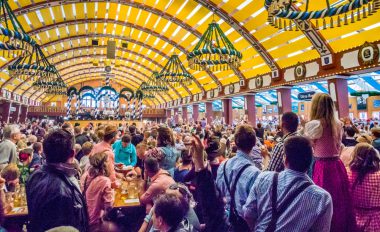
Even if it had to be cancelled in 2020: Once a year, the Oktoberfest attracts millions of visitors from all over the world to the state capital. Then it’s time to party, dance and have fun for 2 weeks. There is a lot on offer for young and old: wild rides, culinary delicacies and, of course, the famous Bavarian beer.
Another highlight: The culinary specialties of Bavaria
What would Bavaria be without its eating and drinking culture? Meat lovers, but also vegetarians, get their money’s worth here.
The white sausage is one of the many classics and the way it is eaten can spark hours of discussion. Traditionally, however, it should be eaten before 12 noon together with sweet mustard, pretzels and wheat beer.
In general, beer is at the centre of Bavarian (food) culture. More than 30 types of beer, such as Helles, wheat beer, Export or Pils wert. Small, local breweries, but also the very large companies, produce around 4,000 different beers.
The “Leberkas”, also known as meat loaf, is a popular to-go meal of the Bavarians in the form of the “Leberkas-Semmel”. However, the name leads to misunderstandings – there is neither liver nor cheese in the Leberkas. For more than 200 years, pork and beef have been processed into a “Laibkas”, i.e. a solid mass.
For vegetarians, the delicious cheese specialties are particularly suitable. The Obatzda, for example, was originally offered as a mixture of old cheese leftovers. And even today, it consists of various soft cheeses such as Brie and Camembert. Together with butter, quark or cream, it becomes a real delicacy that makes every beer garden visit tastier.
Another vegetarian dish is sure to fill you up: the cheese spaetzle. Spätzle and hard cheese are mixed together and sprinkled with fried onions.
If, on the other hand, you like it really hearty, you should treat yourself to pork knuckles with dumplings and sauerkraut. For many decades, this dish has been considered THE typical national dish of Bavaria and has been on the menu at folk festivals and inns.


